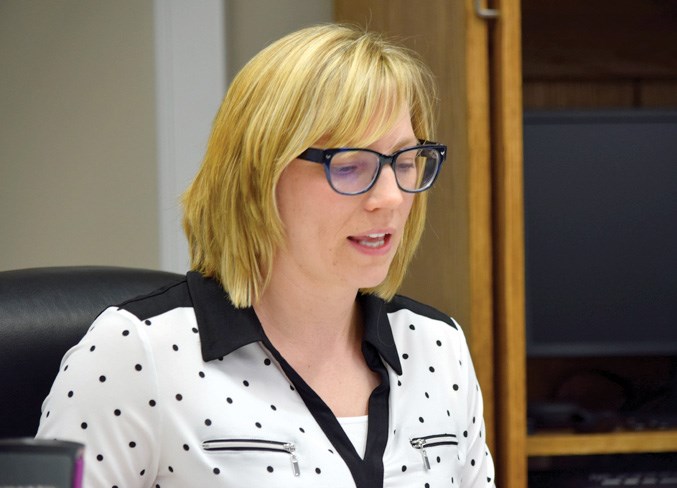It’s official.
At the County of Barrhead’s ratepayers’ April 10 open house at Glenreagh Community Hall residents were told they could expect a small increase in the mill rate.
And that is what has happened. On April 16, councillors unanimously approved a 0.5 per cent increase to all its property tax categories.
The mill rate is the amount of tax payable per dollar of the assessed value of a property calculated per $100,000 of assessed value.
The increase was set as part of the County of Barrhead 2019 Property Tax Bylaw after councillors approved the 2019 operating and capital budgets.
The mill rate for residential properties was set at 6.0823 per cent while farmland is at 16.7949 per cent. Non-residential, pipe and power and machinery and equipment was set 17.3375 per cent
The county expects municipal revenue and transfers from all sources other than taxation to be $4,983,905 and the balance of $11,44,290 will be raised by general taxation.
The taxable assessment also increased by 0.99 per cent to $949,678,690.
“There were some significant changes to the assessment values. The change in growth in residential property was 0.82 per cent market, but actual growth was 1.64 per cent,” said director of finance and administration Tamara Molzahn.
However, in the non-residential, linear (pipe and power) and machine and equipment, she said the county saw a 3.23 per cent decrease in assessment.
Primarily this is due to the oil and gas industry and policy changes by Alberta Municipal Affairs which sets the assessment for linear, she said.
“What that means for residential property is that if a house was worth $250,000 in 2018, they will have an additional $20.04 to their municipal tax bill,” Molzahn said, noting for non-residential it was more difficult to calculate, but estimated for every $100,000 in assessed value their they would see a $3.78. “But oil and gas based businesses will see a smaller increase.”
As for farmland, it is estimated for every $20,000, the tax bill would increase by $1.67.
As for school requisitions for Alberta School Foundation Fund (ASFF) and Opted Out School Board (OOSB) tax rates for residential and farmland is set at 2.5694 per cent while non-residential is 3.6090 per cent.
Molzahn noted they were basing the former on 2018 numbers, because the province, likely due to the timing of the election call, have not released this year’s rates.
Reeve Doug Drozd noted that isn’t uncommon and the requisition rates can be adjusted in subsequent years to accommodate for any differences.
The Barrhead and District Social Housing requisition rate was set at 0.1127 per cent.
2019 Operating and capital budgets
In two separate motions, councillors approved the 2019 operating and capital budgets.
The operating budget proposes expenditures of $16,425,195 including requisitions and transfers. Planned revenue sources other than general taxation is estimated at $4,983,905 leaving $11,441,290 from taxation.
Molzahn noted the two areas impacting the operational budget the most was the aforementioned 0.99 per cent increase in assessment, amounting to about an additional $9 million and an increase in doubtful tax accounts estimated to be $800,000 up from about $80,000 the year before.
The budget also includes a 2.7 per cent increase in the legislative budget, due mainly to a two per cent cost of living allowance to councillors wages and per diems.
The capital budget proposes expenditures of $6,326,426, with additional transfers to operating and capital reserves of $1,681,531 for a total capital budget of $8,007,957.
Financial plan
Councillors also approved a three-year financial and capital plan.
County manager Debbie Oyarzun noted the plan is a new requirement for municipalities under the revised Municipal Government Act.
“This is a good change because it allows us to be more thorough in our planning because we have to think about our operation in future years and make sure our reserves are suitable for anything we might want to purchase,” she said.
Oyarzun added that as always will be up to councillors to approve the current year of the plan along with any changes they would like to make, including those of subsequent years.
Molzahn noted the budget in the plan does not need to be balanced, unlike an operating budget.
“The reason for the plan is so that we can focus on the issues, challenges or capitalize on opportunities that we may see,” she said.
In the 2020 plan (not included in the public information package) there is a projected $768,033 deficit.
The reason Molzahn said is that they believe they will continue to have issues collecting taxes from the oil and gas industry.
“Our tax stabilization reserve will almost be drained in 2019, if what we planned for actually comes to fruition,” she said. “That doesn’t mean we will have to raise our taxes sky high in 2020 ... we do have other options, but it might be a scramble.”
In 2021 and 2022, they are projecting a small surplus of $28,948 and $6,003 because they forecast an improvement in non-paid oil and gas company accounts.
“If they do go bankrupt, there will likely be a new operator which presumedly will be able to pay those taxes or something will give at a higher level of government.”



